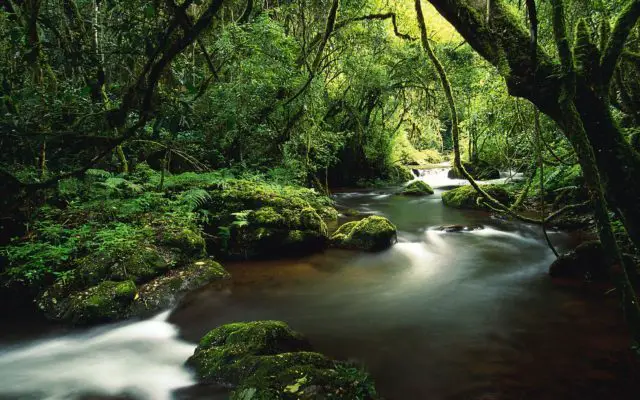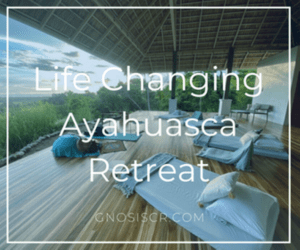The people of Tortuguero proudly display the wild nature that this park unfolds between freshwater canals and the Caribbean Sea. In the province of Limón, in eastern Costa Rica, a long tongue of tropical forest floats above the sea. Around it, countless channels are lost in the dense jungle. We are about to enter one of the richest areas in flora and fauna in the country. And that is saying a lot, since the home of “the Ticos” has no less than 6 % of the world’s biodiversity and more than 20 protected areas or, what is the same, a quarter of its territory.
This coastal park of 312 square kilometers guards the nesting of the CheloniaMydas, commonly known as the green turtle, which measures up to one meter long and weighs 200 kilograms. In addition, it preserves the more than 2,000 species of plants, 400 trees, 400 birds and the rest of the marine and terrestrial species that inhabit it: alligators, howler monkeys, toucans, sloths, iguanas, otters, jaguars, tolomucos or the emblematic tree frog red eyed

After having crossed the Braulio Carrillo National Park and the extensive banana plantations built around the old railroad tracks that linked San José with Puerto Limón, the simple La Pavona pier is the only way, along with the air, to get to Tortuguero National Park, thus maintaining the authenticity of its past.
Aboard a boat we cross the narrow La Suerte River to continue, among coconut and cocoa trees, through the mighty Harold channel and end up in the Tortuguero Canals, 1-hour journey before a landscape changes as we advance through the jungle on our way to the Costa Rican North Caribbean. The boat zigzags over the waters tinted chocolate brown by tropical rains, making its way through the purest vegetation. It is at that moment when we realize that Costa Rica’s motto is not just a way of life…It is ‘Pure Life’! And local life also flows guarded by these mangroves, in boats that transport people, goods, and food to the most isolated communities in the region.
The Tortuguero canals start at the confluence of 2 rivers, forming a unique ecosystem. “We have entered the national park”, announces the boat guide. “There are many conservation regulations here. We are in one of the wettest areas of the country, with annual rainfall exceeding 6,000 millimeters. Although it usually rains less between January and March, there is no dry season”. The thick woods are the result of the water that constantly irrigates them.
A kayak tour through the system of pipes, which connect rivers and lagoons, allows you to immerse yourself in the native vegetation and fauna more closely, providing a very different perspective of the place. Crossing paths with the small boats of those who opt for quiet walks to observe all the creatures that inhabit the environment, we enter the labyrinthine canals where the largest boats do not reach.
“Some canals are artificial”, says Mauricio Vargas, adventure tourism guide. “They were opened for the extraction and transport of trees when the logging industry settled here in the 1940s”. Mauricio has been taking tours of the Tortuguero canals for more than 20 years; “I enjoy when tourists are amazed by the wonders of the park”. His joy is evident every time he spots an animal.
“They are in their habitat, so it is not always easy to see them all”. This is the case of the Kingfisher, which jumps from branch to branch splashing in the water for a few thousandths of seconds and then disappears. An anhinga snakes along the shore, “it is known as a snake bird because of the fine and curved shape of its neck”. Mauricio also guides excursions at sunset: “The atmosphere is very different, so it is also convenient to sail at night”. The Chiquero, Mora, Laguna or Palma streams offer some of the corners in which to enjoy nature intimately.
In solitude, the silence is only interrupted by the echoes of the jungle. Basilisks run fleetingly through the mangroves. Surprising oriole nests hang from the trees like large baskets woven by these elegant weaver birds. Our guide has a powerful view to find any specimen of the fauna camouflaged with the infinite greens and thus be able to show it to tourists.
When the sky explodes in a thousand shades of orange, the nocturnal creatures appear. Bats replace birds, nocturnal butterflies replace daytime ones, toads camouflage themselves among large leaves, and ocelots and jaguars wait cautiously in the thicket. Another option to celebrate the end of the day is to get on board the Kanawa, a boat where you can dine by the light of a Caribbean moon, sailing to the beat of the jungle sounds.
The essence of Tortuguero
The Tortuguero National Park is made up of 80,000 hectares, 30,000 of which are terrestrial and 50,000 marine. Of these, only 7 % can be visited; the rest is virgin forest.
They say that when Christopher Columbus arrived in the Caribbean in 1503, he mentioned that there were so many turtles that they piled up in the sea. About 3 centuries later, the desire to trade with them, for the consumption of their meat and eggs and for the manufacture of jewelry and other objects with their shells, was the origin of the populations of the area, which almost wiped out the species.
Likewise, the lumber industry caused damage to the land with the opening of the canals, which have been completely regenerated. In 1975 the national park was created to protect the territory as well as its inhabitants, and everything changed. Currently, turtles continue to be the main economic resource thanks to tourism, and the place name of Tortuguero has been able to reinvent itself.
Four species of turtles come to the black sand beach of Tortuguero to lay their eggs: green, hawksbill, leatherback and big-headed. To do this, they dig holes in which they deposit more than 80 eggs per cavity and then cover them with sand with the help of their fins. Incubation will last between 50 and 75 days. During the nights from July to October, and always accompanied by an authorized guide, you can witness the spectacle of the birth of hundreds of green turtles. Only one in a thousand will reach adulthood.
Next to the beach, the El Jaguar trail runs 2.5 kilometers caressed by the jungle and the impetuous waves. It is the one used for the contemplation of the spawning of the turtles. In it is the Turtle Conservation Center, which publicizes the projects for the care of these marine reptiles.
From the Cerro de Tortuguero, located on an extinct volcano at a height of 119 meters, you can get wonderful views of the beach and the park’s canals. On both sides of the main channel there are small hotels made up of wooden cabins next to a row of hammocks that sway to the rhythm of the moans of the jungle.
San Francisco and Tortuguero are 2 of the small towns where part of the local community lives. In the latter, the largest, colorful wooden houses are distributed along a dirt road where the life of its 700 inhabitants boils; there, you can see groups playing dominoes, children on their way to school, families walking, etc. On one side, the sea breaks with its bravery on the beach, and on the other, the calm lagoon of the channel induces a hypnotic calm.
On this Caribbean coast there are still traces of the logging past. Remains of the machinery used in the mid-20th century are exhibited as sculptures from other times, far removed from today’s, in which what prevails is protection. To continue contributing to it, 98 % of the energies used in the town are renewable, and there is even a recycling center through which all the garbage in the area passes. It is interesting to visit it to understand the country’s level of commitment to the environment. In fact, in Costa Rica, 99 % of its electrical energy comes from renewable sources, of which the majority is hydroelectric.
Returning to the only street in the town of Tortuguero, which is shared by both pedestrians and bicycles, the wild maelstrom of this national park catches us again. What a fortune is to live in that ideal Eden!


